Planning a trip to Normandy to explore the historical D-Day sites? SIXT.VN provides expert travel guidance for an immersive journey through Normandy’s significant WWII landmarks and Vietnam Travel. Discover the top D-Day sites in Normandy with SIXT.VN and experience the convenience of reliable Vietnam Travel services.
1. What Makes Normandy A Key Destination For D-Day Tourism?
Normandy is a pivotal destination for D-Day tourism because it was the site of the Allied invasion during World War II, a turning point in the conflict. According to research from the French Government Tourist Office in 2023, over 5 million people visit Normandy annually to explore the D-Day landing beaches, museums, and memorials. These sites offer tangible connections to the past, allowing visitors to understand the magnitude of the events that took place. The region’s historical significance is amplified by well-preserved locations and comprehensive museums, providing an educational and emotional experience.
1.1. What Are The Key Historical Sites In Normandy?
Normandy boasts a variety of key historical sites, each telling a part of the D-Day story. These include:
- Omaha Beach: The site of intense fighting and significant American losses.
- Utah Beach: Where American forces landed with relatively light resistance.
- Gold Beach: A British landing site, offering insight into the broader Allied effort.
- Juno Beach: The Canadian landing site, highlighting their crucial role in the invasion.
- Sword Beach: Another British landing site, completing the five main beaches.
- Pointe du Hoc: A dramatic cliff-top location where U.S. Rangers scaled steep heights to neutralize German gun emplacements.
- Normandy American Cemetery: The final resting place for over 9,000 American soldiers, offering a poignant place for reflection.
1.2. What Unique Experiences Does Normandy Offer History Enthusiasts?
Normandy provides unique experiences that allow history enthusiasts to immerse themselves in the past. Re-enactments, held annually around D-Day anniversaries, bring history to life with participants in period uniforms and equipment. Guided tours led by knowledgeable experts offer in-depth insights into the strategic and personal aspects of the invasion. Additionally, walking tours along the beaches and through preserved battlefields offer a visceral connection to the events, enhancing understanding and appreciation.
2. Which Are The Must-Visit D-Day Sites In Normandy?
For those interested in D-Day tourism, several sites in Normandy are essential to visit. Each location offers unique insights into the events of June 6, 1944, and the subsequent Battle of Normandy.
2.1. Caen Memorial Museum
The Caen Memorial Museum is the most comprehensive World War II museum, giving you a strong focus on the topic of peace. It is a lesson in symbolism. According to the Caen Memorial Museum official website, this museum is one of the most visited WWII museums in France, attracting over 400,000 visitors each year. It covers the start and globalization of the war, the various resistance movements, genocide and mass violence, liberation and the end of the war, the D-Day landings and the Battle of Normandy.
 exterior of caen museum – large concrete wall with flags in front
exterior of caen museum – large concrete wall with flags in front
Why Visit:
- Comprehensive exhibits covering the causes and consequences of WWII.
- Dedicated sections on D-Day and the Battle of Normandy.
- Extensive collection of artifacts, documents, and photographs.
- Gardens dedicated to American, Canadian, and British soldiers.
2.2. Arromanches-les-Bains
Arromanches-les-Bains is at the center of the Gold Beach landing zone and played an invaluable part in the D-Day landings, hence, the entirety of World War II. It was here that the Allies built their artificial, “temporary” harbors to facilitate the unloading of vehicles, materials, and people into Europe. According to the Arromanches Tourist Office, the artificial harbors helped bring 300,000 men, 54,000 vehicles, and 104,000 tons of supplies into Europe by June 12, 1944.
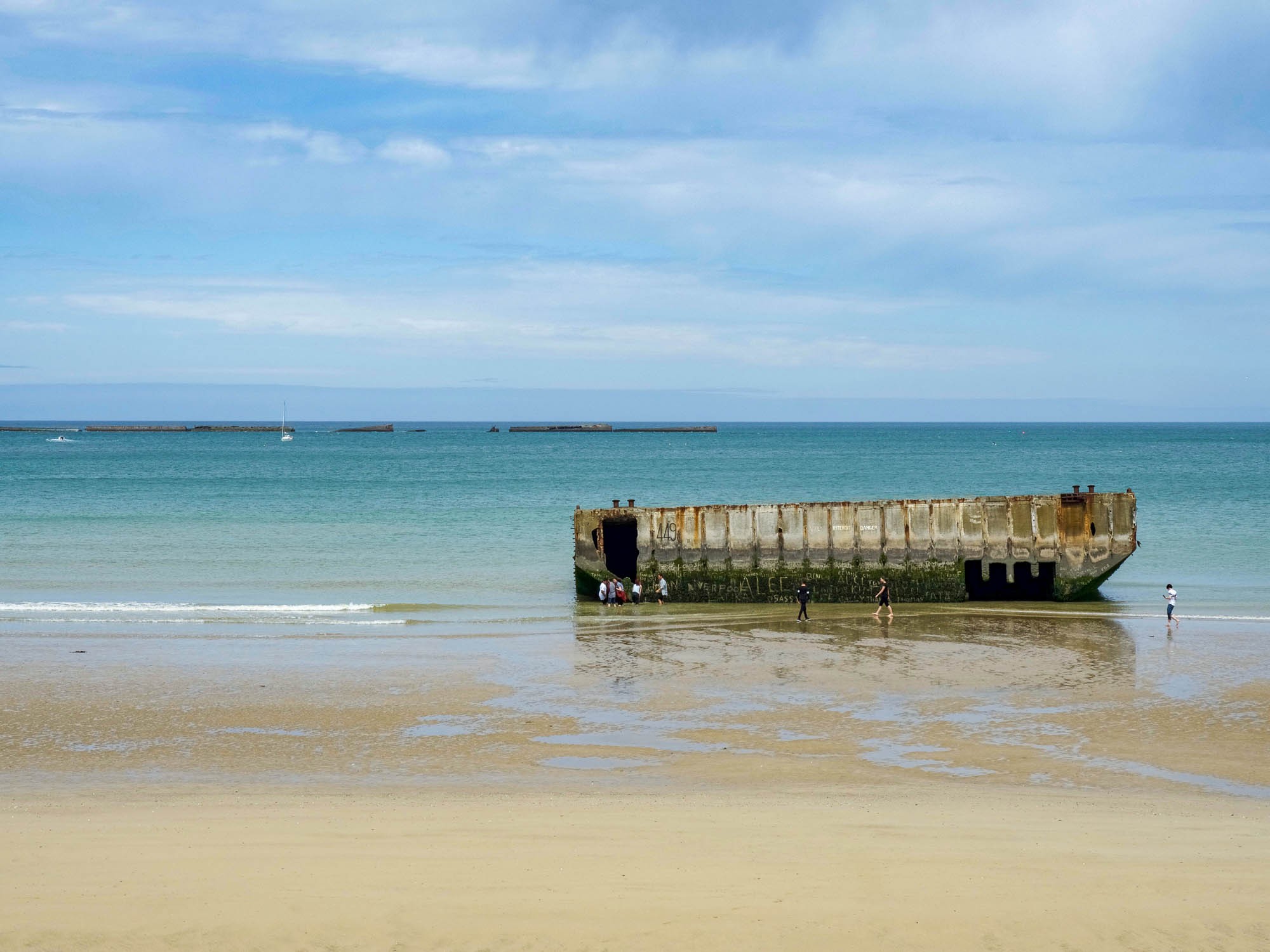 artifical harbor of arromanches sitting in a teal ocean
artifical harbor of arromanches sitting in a teal ocean
Why Visit:
- Remains of the artificial Mulberry harbors still visible in the sea.
- Musée du Débarquement focuses on the construction of the harbors.
- Arromanches 360° circular theater immerses visitors in the Battle of Normandy.
- Charming seaside town atmosphere with D-Day memorials and gift shops.
2.3. Longues-sur-Mer Battery
The Longues-sur-Mer battery, situated between the Omaha and Gold landing beaches, consists of four gun installations that were used by the German troops on D-Day. According to the Normandy Tourism Board, the Longues-sur-Mer battery is the only German coastal defense battery to be classified as an official historic monument.
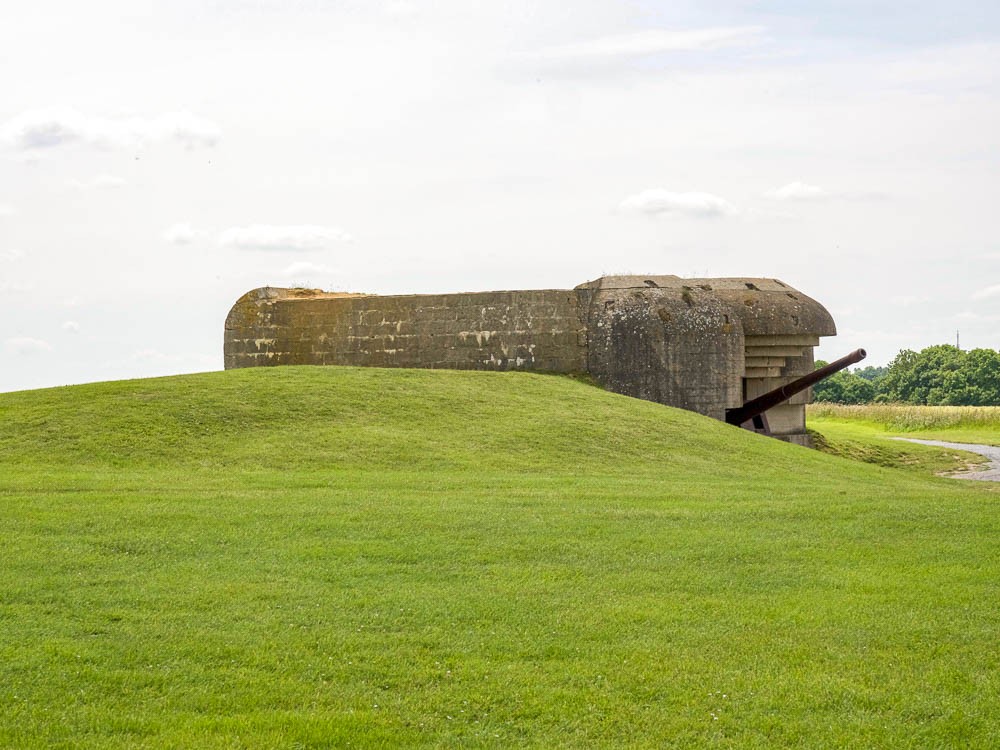 old brown gun installment surrounded by green grass
old brown gun installment surrounded by green grass
Why Visit:
- Well-preserved German gun installations and bunkers.
- Excellent views over the Atlantic and the D-Day landing beaches.
- Opportunity to gauge the strength and power of the German guns.
- Less crowded compared to other popular sites, allowing for peaceful reflection.
2.4. Normandy American Cemetery
Normandy American Cemetery serves as the final resting place for 9,387 U.S. soldiers, most of them victims of the D-Day landings and ensuing battles. The cemetery overlooks Omaha Beach and is considered American soil, given to the United States by the French government. According to the American Battle Monuments Commission, the cemetery is one of the most visited American cemeteries in Europe, drawing over 1 million visitors annually.
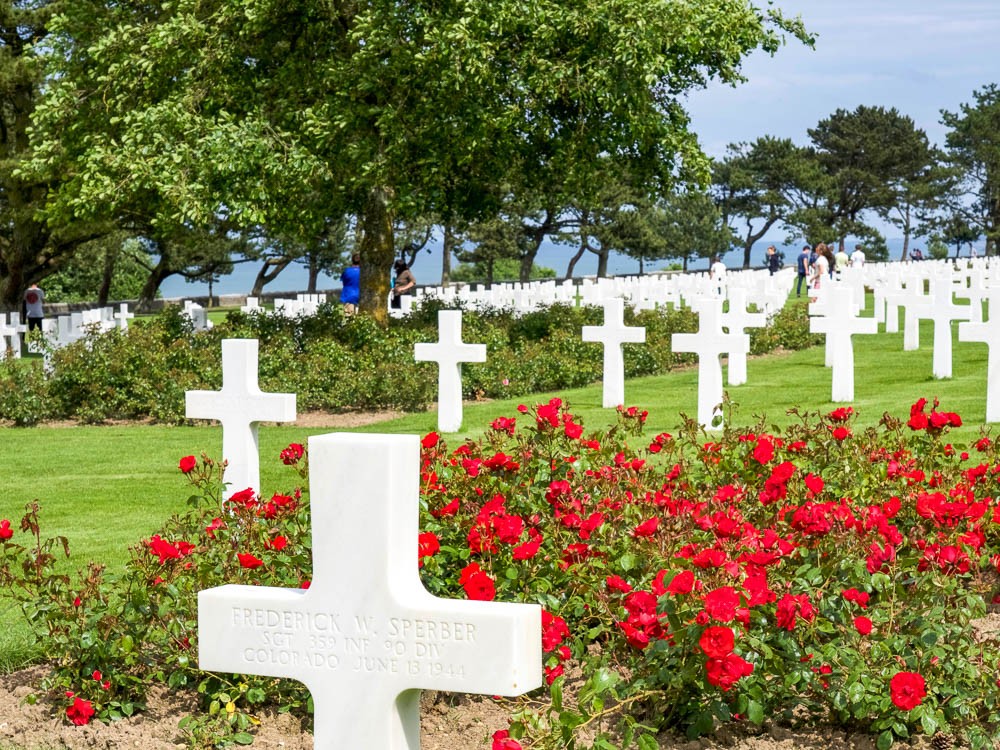 white marble crosses in front of red roses on a sunny day
white marble crosses in front of red roses on a sunny day
Why Visit:
- Poignant and emotional experience honoring American soldiers.
- Stunning views overlooking Omaha Beach.
- Visitors Center with exhibits on D-Day and the soldiers buried there.
- Walls of the Missing listing the names of soldiers whose bodies were never recovered.
2.5. Omaha Beach
Omaha Beach, where American troops suffered the worst on D-Day, the experience is surreal. The massive size, the weight you feel just by being there, and how, this place that was once total Hell on Earth, is also just a pleasant beach surrounded by quaint French cottages. According to the U.S. Army Center of Military History, Omaha Beach saw approximately 2,400 American casualties on D-Day.
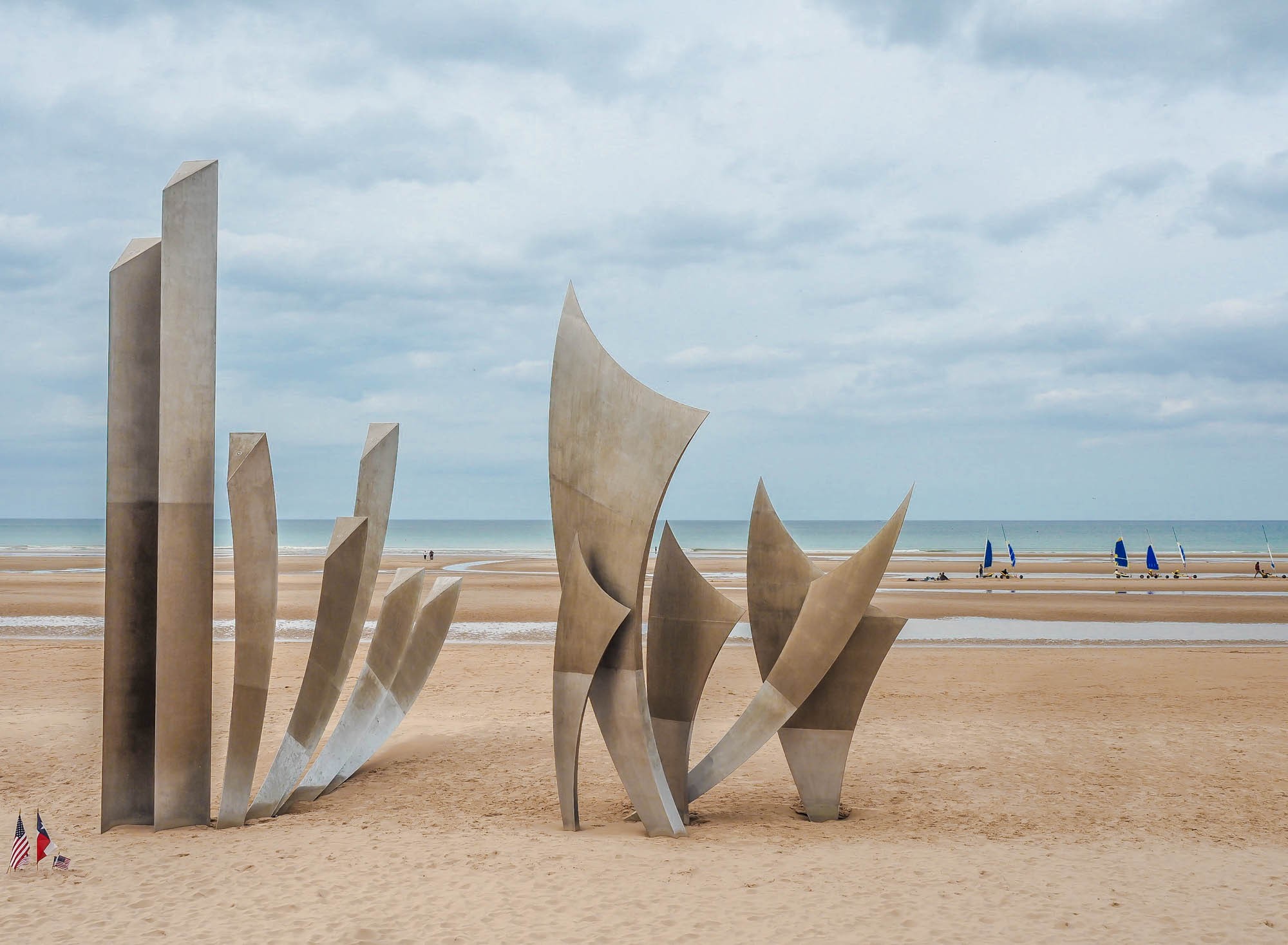 What to see at Omaha Beach, Normandy / Museums, memorials, monuments, and more / things to do at Omaha beach / D-Day and World War II sites in Normandy / #destinationwwii #worldwarii #normandy #omahabeach #dday
What to see at Omaha Beach, Normandy / Museums, memorials, monuments, and more / things to do at Omaha beach / D-Day and World War II sites in Normandy / #destinationwwii #worldwarii #normandy #omahabeach #dday
Why Visit:
- Ground zero for American D-Day history.
- Opportunity to reflect on the sacrifices made by American soldiers.
- Sculpture of “Les Braves” symbolizing hope, freedom, and fraternity.
- D-Day Signal Monument marking the historic event.
2.6. Pointe du Hoc
Pointe du Hoc is a 100-foot cliff overlooking the English Channel. On the morning of June 6th, the US Army captured Pointe du Hoc after scaling the cliffs—a feat many believed to be impossible. According to the U.S. National Archives, the U.S. Rangers who scaled Pointe du Hoc suffered a casualty rate of over 60% during the operation.
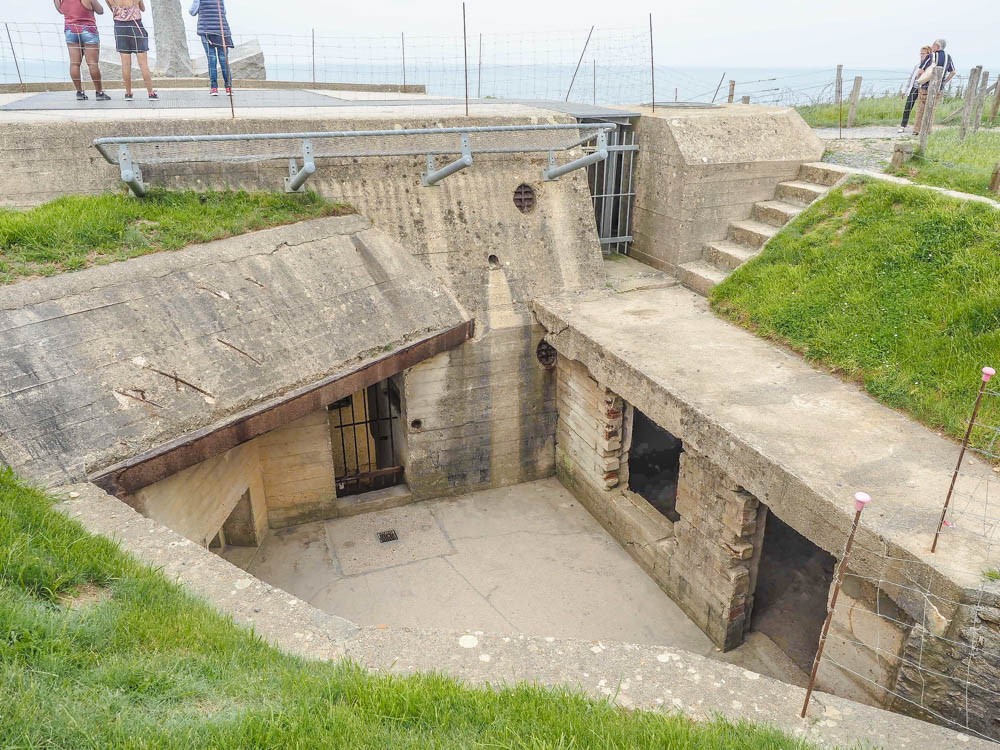 What to see at Omaha Beach, Normandy, France: Pointe du Hoc German Bunker
What to see at Omaha Beach, Normandy, France: Pointe du Hoc German Bunker
Why Visit:
- Dramatic cliff-top location with German gun casements and bunkers.
- Visual evidence of the intense bombing with numerous bomb craters.
- U.S. Ranger Monument honoring the soldiers who scaled the cliffs.
- Opportunity to see what ‘impossible’ really looks like.
2.7. La Cambe German War Cemetery
La Cambe German War Cemetery has a total grave count at 21,245. This makes it the largest cemetery in Normandy and the largest German war cemetery. According to the Volksbund Deutsche Kriegsgräberfürsorge (German War Graves Commission), the cemetery contains the remains of soldiers from various German units who fought in the Battle of Normandy.
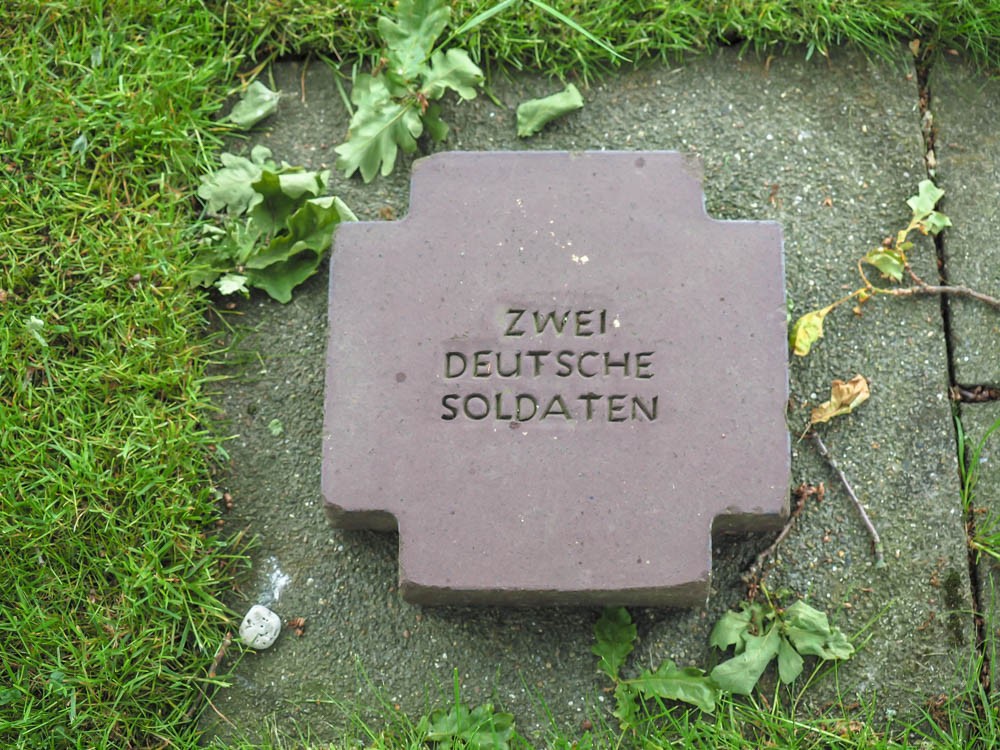 What to see at Omaha Beach, Normandy, France: La Cambe German War Cemetery
What to see at Omaha Beach, Normandy, France: La Cambe German War Cemetery
Why Visit:
- Largest German war cemetery in Normandy.
- Profound and heavy atmosphere contrasting with the American cemetery.
- Opportunity to reflect on the human cost of war from all perspectives.
- Large mound containing the unidentified bodies of almost 300 German soldiers.
3. How Can SIXT.VN Enhance Your D-Day Tourism Experience?
SIXT.VN enhances your D-Day tourism experience by providing comprehensive and reliable travel services tailored to your needs. We offer personalized itinerary planning, ensuring you visit the most significant sites while accommodating your schedule and interests. With SIXT.VN, you gain access to convenient airport transfer services, eliminating the stress of navigating unfamiliar transportation systems. Our hotel booking assistance provides a range of accommodations to fit your budget and preferences, ensuring a comfortable and hassle-free stay.
3.1. What Specific Services Does SIXT.VN Offer For D-Day Tourists?
SIXT.VN offers a range of services specifically designed for D-Day tourists, including:
- Customized Itinerary Planning: Tailoring your trip to focus on the D-Day sites that interest you most, while optimizing your time.
- Airport Transfer Services: Providing seamless and reliable transportation from the airport to your accommodations.
- Hotel Booking Assistance: Offering a variety of hotels near key D-Day sites, catering to different budgets and preferences.
- Guided Tours: Arranging knowledgeable guides who specialize in D-Day history, providing in-depth insights and historical context.
- Transportation Options: Offering rental cars and private transportation services for convenient travel between sites.
3.2. How Does SIXT.VN Ensure A Smooth And Informative Trip?
SIXT.VN ensures a smooth and informative trip by offering:
- Expert Local Guides: Providing access to knowledgeable guides who offer in-depth historical context and personalized insights.
- Detailed Travel Information: Supplying comprehensive information about each site, including its historical significance and practical details.
- 24/7 Support: Offering round-the-clock assistance to address any questions or concerns during your trip.
- Flexible Booking Options: Allowing you to adjust your itinerary as needed, ensuring a hassle-free experience.
3.3. How Can You Book SIXT.VN Services For Your Normandy Visit?
Booking SIXT.VN services for your Normandy visit is straightforward:
- Visit SIXT.VN: Navigate to our website to explore the available services and packages.
- Select Your Services: Choose the options that best suit your needs, such as itinerary planning, airport transfers, and hotel bookings.
- Contact Us: Reach out via our hotline/WhatsApp at +84 986 244 358 or visit us at 260 Cau Giay, Hanoi, Vietnam, for personalized assistance.
- Confirm Your Booking: Finalize your booking with our customer service team, ensuring all details are accurate and tailored to your preferences.
4. What Are Some Practical Tips For Planning Your D-Day Tourism Trip?
Planning a D-Day tourism trip requires careful consideration to ensure a meaningful and respectful experience. Key aspects include the best times to visit, appropriate accommodations, and essential items to pack.
4.1. When Is The Best Time To Visit Normandy For D-Day Tourism?
The best time to visit Normandy for D-Day tourism is during the shoulder seasons (April-May and September-October). According to data from the Normandy Tourist Board, these months offer pleasant weather, fewer crowds, and lower prices compared to the peak summer months. Visiting around the D-Day anniversary (June 6) can be special, but expect larger crowds and higher costs.
4.2. What Are The Accommodation Options Near The D-Day Sites?
Accommodation options near the D-Day sites range from budget-friendly hotels to charming bed and breakfasts.
| Accommodation Type | Description | Location Examples |
|---|---|---|
| Budget Hotels | Affordable options with basic amenities. | Near Bayeux and Caen |
| Mid-Range Hotels | Comfortable hotels with added amenities like on-site restaurants. | Arromanches-les-Bains and Courseulles-sur-Mer |
| Bed and Breakfasts (Chambres d’hôtes) | Quaint accommodations offering a personal touch and local experience. | Throughout the Normandy countryside |
| Luxury Hotels | High-end hotels with premium services and amenities. | Deauville and Honfleur (accessible to D-Day sites) |
| Vacation Rentals (Gîtes) | Self-catering accommodations providing more space and privacy, ideal for families or groups. | Rural areas near landing beaches |
4.3. What Should You Pack For Your Trip To Normandy?
Packing for a D-Day tourism trip should include items that ensure comfort and respect for the historical sites:
- Comfortable Walking Shoes: Essential for exploring the beaches and memorial sites.
- Weather-Appropriate Clothing: Normandy’s weather can be unpredictable, so pack layers.
- Rain Gear: A waterproof jacket or umbrella is advisable.
- Sun Protection: Sunscreen, a hat, and sunglasses are necessary for sunny days.
- Respectful Attire: Dress modestly when visiting cemeteries and memorial sites.
- Camera: To capture the significant moments and landscapes.
- Binoculars: Useful for observing details at sites like Pointe du Hoc and Arromanches.
- Notebook and Pen: For jotting down reflections and historical insights.
- Translation App: If you don’t speak French, a translation app on your smartphone can be helpful.
- Portable Charger: To keep your devices powered throughout the day.
5. What Cultural And Ethical Considerations Should You Keep In Mind?
When visiting D-Day sites, it is crucial to be mindful of cultural and ethical considerations. Showing respect for the solemnity of the locations and the sacrifices made is paramount.
5.1. How Can You Show Respect At D-Day Memorials And Cemeteries?
Showing respect at D-Day memorials and cemeteries involves several key practices:
- Maintain Silence: Speak quietly and avoid loud conversations.
- Dress Appropriately: Wear modest clothing.
- Follow Rules: Adhere to any guidelines or regulations posted at the site.
- Avoid Disturbing Graves: Do not touch or step on grave markers.
- Refrain from Eating or Drinking: Except in designated areas.
- Be Mindful of Photography: Avoid taking photos that might be considered disrespectful.
- Express Gratitude: Take a moment to reflect and honor the sacrifices made.
5.2. What Are The Do’s And Don’ts When Visiting Historical Sites?
When visiting historical sites in Normandy, observe the following do’s and don’ts:
| Do’s | Don’ts |
|---|---|
| Read historical information and exhibits to understand context. | Touch or remove artifacts. |
| Stay on marked paths to preserve the environment. | Climb on structures or enter restricted areas. |
| Ask questions of guides or staff to learn more. | Litter or leave trash behind. |
| Be respectful of other visitors and their experiences. | Engage in disruptive behavior. |
| Take photos to document your visit. | Fly drones without permission. |
| Support local businesses and economies. | Disrespect the memory of those who sacrificed their lives. |
| Reflect on the significance of the events that took place. | Make light of or trivialize the historical events. |
| Share your experience and encourage others to visit. | Ignore the instructions or guidance provided by site staff. |
| Show appreciation for the preservation efforts. | Vandalize or deface any part of the site. |
| Be aware of the impact of your visit on the local community. | Exploit the site for commercial purposes without authorization. |
5.3. How Can You Support The Preservation Of D-Day Sites?
Supporting the preservation of D-Day sites can be achieved through various means:
- Donate to Preservation Organizations: Contribute to groups dedicated to maintaining and preserving the sites.
- Volunteer Your Time: Participate in cleanup or restoration projects.
- Educate Others: Share information about the importance of preserving these sites.
- Respect Site Guidelines: Adhere to rules and regulations designed to protect the locations.
- Visit Responsibly: Choose tours and services that prioritize preservation and sustainability.
- Support Local Economies: Patronize local businesses that benefit from tourism related to the sites.
- Advocate for Funding: Encourage government and private investment in preservation efforts.
- Report Damage or Vandalism: Alert authorities to any issues that threaten the sites.
- Promote Responsible Tourism: Encourage others to visit with respect and mindfulness.
- Engage in Citizen Science: Participate in projects that monitor the condition of the sites.
6. What Are Some Recommended Books And Movies For D-Day Enthusiasts?
To enhance your understanding and appreciation of D-Day, consider exploring these recommended books and movies that offer in-depth insights and portrayals of the events.
6.1. What Books Offer In-Depth Insights Into D-Day?
Several books provide comprehensive accounts and perspectives on D-Day:
- D-Day: June 6, 1944: The Climactic Battle of World War II by Stephen Ambrose: A detailed narrative of the events of D-Day, based on interviews with veterans.
- Band of Brothers by Stephen Ambrose: Follows the journey of Easy Company, 2nd Battalion, 506th Parachute Infantry Regiment, 101st Airborne Division, from training to the end of the war.
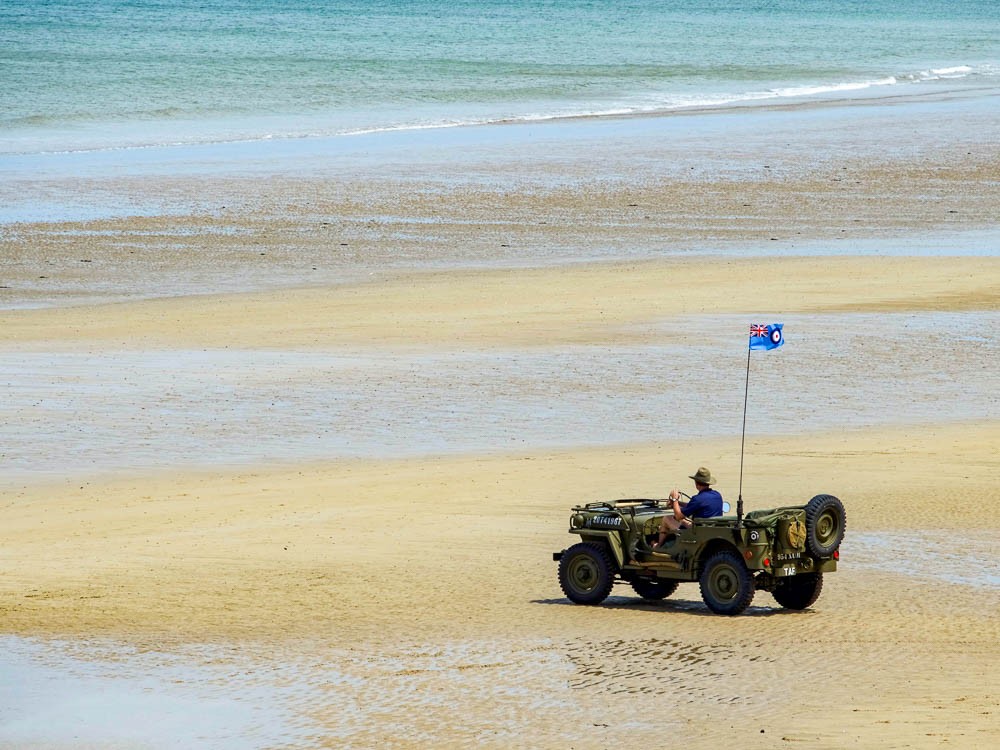 man in a wwii jeep on a beach
man in a wwii jeep on a beach
- The Longest Day: The Classic Epic of D-Day by Cornelius Ryan: A classic account of D-Day, offering a broad perspective from both Allied and German sides.
- Omaha Beach: D-Day, June 6, 1944 by Joseph Balkoski: Focuses specifically on the intense fighting and experiences on Omaha Beach.
- Double Cross: The True Story of the D-Day Spies by Ben Macintyre: Reveals the complex deception operations that played a crucial role in the success of D-Day.
6.2. What Movies Accurately Depict D-Day Events?
Several movies offer accurate and compelling portrayals of D-Day events:
- Saving Private Ryan (1998): A powerful depiction of the D-Day landings and the search for a paratrooper whose brothers have been killed in action.
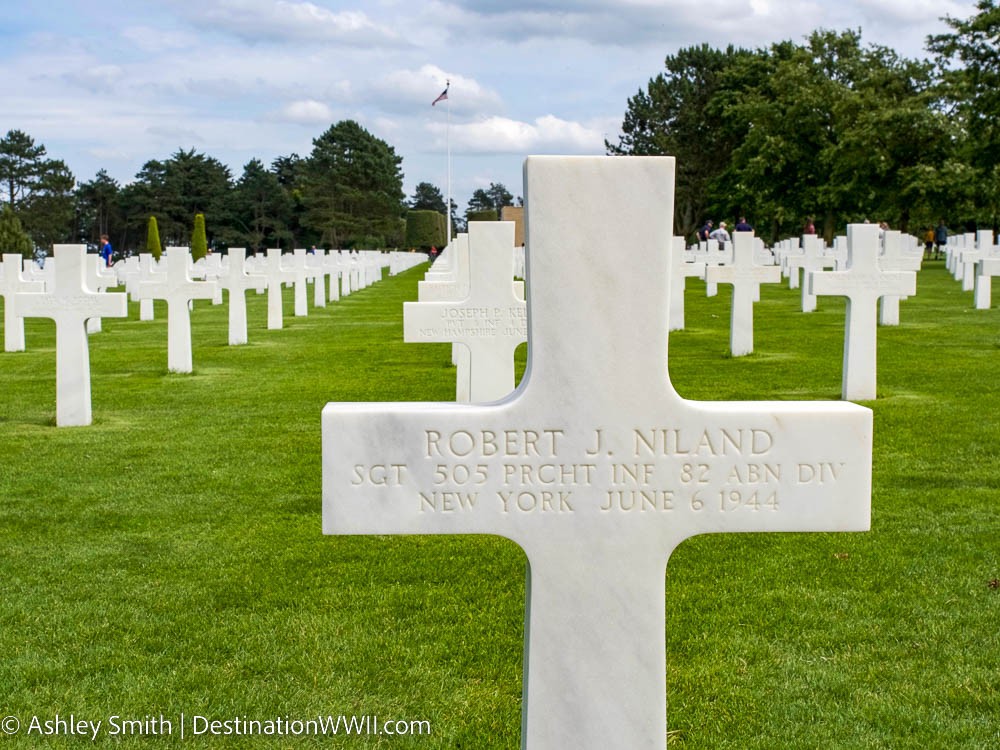 white marble cross-shaped headstone with Robert J. Niland on it
white marble cross-shaped headstone with Robert J. Niland on it
- The Longest Day (1962): A star-studded film presenting a comprehensive view of D-Day from multiple perspectives.
- Band of Brothers (2001): A critically acclaimed miniseries that follows Easy Company through their experiences in Europe.
 easy company command post utah beach normandy
easy company command post utah beach normandy
- Storming Juno (2010): A half-movie, half-documentary that portrays Canada’s role in D-Day through the true stories of paratroopers, tank crewmen, and regular infantry.
- Ike – Countdown to D-Day (2004): Follows the 90 terrifying days leading up to the invasion as General Dwight D. Eisenhower decides the fates of thousands of soldiers while managing complex strategic relationships with British Prime Minister Winston Churchill, American General George S. Patton, Britain’s Field Marshall Bernard Montgomery and French President Charles de Gaulle.
6.3. How Can These Resources Enhance Your Understanding Of D-Day?
These books and movies can significantly enhance your understanding of D-Day by:
- Providing detailed historical context and analysis.
- Offering personal accounts and perspectives from soldiers and civilians.
- Visually portraying the events and landscapes of D-Day.
- Humanizing the individuals involved and their experiences.
- Inspiring a deeper appreciation for the sacrifices made during the war.
- Creating a more immersive and emotional connection to the history.
7. How Does D-Day Tourism Contribute To Historical Awareness?
D-Day tourism plays a vital role in contributing to historical awareness by ensuring that the events of World War II and the sacrifices made are remembered and understood by future generations.
7.1. How Does Tourism Help Preserve The Memory Of D-Day?
Tourism helps preserve the memory of D-Day through several mechanisms:
- Supporting Site Preservation: Revenue generated from tourism helps fund the maintenance and preservation of historical sites, ensuring they remain accessible for future generations.
- Educating Visitors: Museums, memorials, and guided tours provide educational opportunities that deepen visitors’ understanding of D-Day.
- Honoring Veterans: Tourism provides a platform to honor and remember the veterans who fought in the war, ensuring their stories are not forgotten.
- Promoting Awareness: Increased visibility of D-Day sites through tourism raises awareness and encourages further research and education.
- Engaging Future Generations: By making history accessible and engaging, tourism helps pass down the memory of D-Day to younger generations.
- Community Involvement: Local communities often play a significant role in preserving and promoting D-Day history, fostering a sense of collective memory.
- Economic Benefits: The economic benefits of tourism incentivize communities to protect and promote their historical assets.
7.2. What Educational Opportunities Are Available At D-Day Sites?
Educational opportunities at D-Day sites are abundant and varied:
- Museums: Offer extensive exhibits with artifacts, documents, and interactive displays.
- Guided Tours: Provide in-depth historical context and personalized insights.
- Memorials: Serve as places of reflection and remembrance, often with informative panels.
- Visitor Centers: Offer introductory information and resources for exploring the sites.
- Documentary Films: Show screenings that provide historical overviews and personal stories.
- Living History Presentations: Re-enactments and demonstrations that bring history to life.
- Educational Programs: Workshops and seminars for students and adults.
- Online Resources: Websites and digital archives that offer access to historical information.
- Walking Tours: Allow visitors to explore the sites on foot, guided by knowledgeable experts.
- Special Events: Commemorations and anniversaries that offer unique educational experiences.
7.3. How Can Individuals Engage With D-Day History Beyond Tourism?
Individuals can engage with D-Day history beyond tourism through various activities:
- Read Books and Articles: Explore in-depth accounts and analyses of D-Day.
- Watch Documentaries and Films: Gain visual and narrative perspectives on the events.
- Interview Veterans: Collect and preserve firsthand accounts of the war.
- Visit Local Museums and Archives: Explore exhibits and collections related to D-Day.
- Participate in Educational Programs: Attend lectures, workshops, and seminars.
- Join Historical Societies: Connect with others interested in D-Day history.
- Volunteer at Preservation Organizations: Contribute to efforts to maintain and protect D-Day sites.
- Share Information on Social Media: Promote awareness and engage others in discussions about D-Day.
- Support Historical Research: Contribute to funding or participate in research projects.
- Teach Others About D-Day: Share your knowledge and passion for history with friends, family, and students.
8. What Emerging Trends Are Shaping D-Day Tourism?
D-Day tourism is continually evolving, with several emerging trends shaping how visitors experience and engage with this historical period.
8.1. What New Technologies Are Being Used To Enhance The Visitor Experience?
New technologies are being integrated to enhance the visitor experience at D-Day sites:
- Augmented Reality (AR): Overlays digital information onto the real-world environment, providing interactive historical context.
- Virtual Reality (VR): Creates immersive simulations of D-Day events, allowing visitors to experience the past firsthand.
- Interactive Touchscreens: Offer access to historical documents, photographs, and maps.
- Mobile Apps: Provide guided tours, historical information, and GPS-based navigation.
- 3D Reconstructions: Recreate historical landscapes and structures, offering visual insights into the past.
- Holographic Displays: Project lifelike images of historical figures and events.
- Digital Archives: Provide online access to vast collections of historical documents and artifacts.
- Gamification: Engage visitors through interactive games and challenges.
- Virtual Tours: Allow remote access to D-Day sites, expanding accessibility.
- Social Media Integration: Encourage visitors to share their experiences and engage with historical content online.
8.2. How Is Sustainable Tourism Being Integrated Into D-Day Tourism?
Sustainable tourism is increasingly being integrated into D-Day tourism:
- Preservation of Historical Sites: Efforts to protect and maintain the sites for future generations.
- Environmental Protection: Measures to minimize the environmental impact of tourism.
- Support for Local Communities: Initiatives to benefit local businesses and economies.
- Responsible Travel Practices: Encouraging visitors to respect the environment and cultural heritage.
- Educational Programs: Raising awareness about the importance of sustainable tourism.
- Green Accommodations: Promoting eco-friendly hotels and lodging options.
- Transportation Alternatives: Encouraging the use of public transportation, cycling, and walking.
- Waste Reduction: Implementing recycling and waste management programs.
- Community Involvement: Engaging local residents in tourism planning and management.
- Certification Programs: Recognizing and promoting sustainable tourism businesses.
8.3. What Are The Future Trends For D-Day Tourism?
Future trends for D-Day tourism include:
- Personalized Experiences: Tailoring tours and activities to individual interests and preferences.
- Immersive Storytelling: Creating more engaging and emotional narratives of D-Day events.
- Technological Integration: Further use of AR, VR, and AI to enhance the visitor experience.
- Sustainable Practices: Increased focus on environmental and community stewardship.
- Expanded Accessibility: Making D-Day sites more accessible to people with disabilities.
- Global Collaboration: Increased cooperation between international organizations and communities.
- Youth Engagement: Developing programs to engage and educate younger generations.
- Cultural Tourism: Integrating D-Day history with broader cultural experiences.
- Year-Round Tourism: Developing attractions and activities to draw visitors throughout the year.
- Enhanced Interpretation: Providing more nuanced and comprehensive historical context.
9. FAQ About D-Day Tourism
9.1. What is D-Day?
D-Day, also known as the Normandy landings, was the Allied invasion of Western Europe on June 6, 1944, marking a turning point in World War II.
9.2. Where did D-Day take place?
D-Day took place on the beaches of Normandy, France, including Omaha, Utah, Gold, Juno, and Sword Beaches.
9.3. Why is D-Day historically significant?
D-Day is historically significant because it marked the beginning of the end for Nazi Germany and the liberation of Western Europe from Axis control.
9.4. What are the main sites to visit for D-Day tourism?
The main sites include Omaha Beach, Utah Beach, Pointe du Hoc, Normandy American Cemetery, Arromanches-les-Bains, and the Caen Memorial Museum.
9.5. How can I show respect when visiting D-Day sites?
Show respect by maintaining silence, dressing appropriately, following site rules, and avoiding disturbing graves or memorials.
9.6. What should I pack for a D-Day tourism trip?
Pack comfortable walking shoes, weather-appropriate clothing, rain gear, sun protection, and respectful attire.
9.7. What is the best time of year to visit Normandy for D-Day tourism?
The shoulder seasons (April-May and September-October) offer pleasant weather, fewer crowds, and lower prices.
9.8. Are there guided tours available for D-Day sites?
Yes, guided tours are available and highly recommended for in-depth historical context and insights. SIXT.VN can arrange these tours for you.
9.9. How does tourism contribute to preserving the memory of D-Day?
Tourism supports site preservation, educates visitors, honors veterans, promotes awareness, and engages future generations.
9.10. What are some recommended books and movies about D-Day?
Recommended books include D-Day: June 6, 1944 by Stephen Ambrose and The Longest Day by Cornelius Ryan. Recommended movies include Saving Private Ryan and The Longest Day.
10. Conclusion: Plan Your D-Day Tourism Trip With SIXT.VN
Immerse yourself in history and honor the heroes of D-Day with a meticulously planned trip to Normandy. SIXT.VN offers expert travel services to ensure your journey is seamless, informative, and deeply meaningful. From personalized itineraries and guided tours to convenient transportation and accommodations, we handle every detail so you can focus on experiencing the profound historical significance of these sites. Contact SIXT.VN today to start planning your unforgettable D-Day tourism adventure.
- Address: 260 Cau Giay, Hanoi, Vietnam
- Hotline/WhatsApp: +84 986 244 358
- Website: SIXT.VN
Let SIXT.VN be your trusted partner in exploring the historic landscapes of Normandy and discovering the best of Vietnam Travel.



